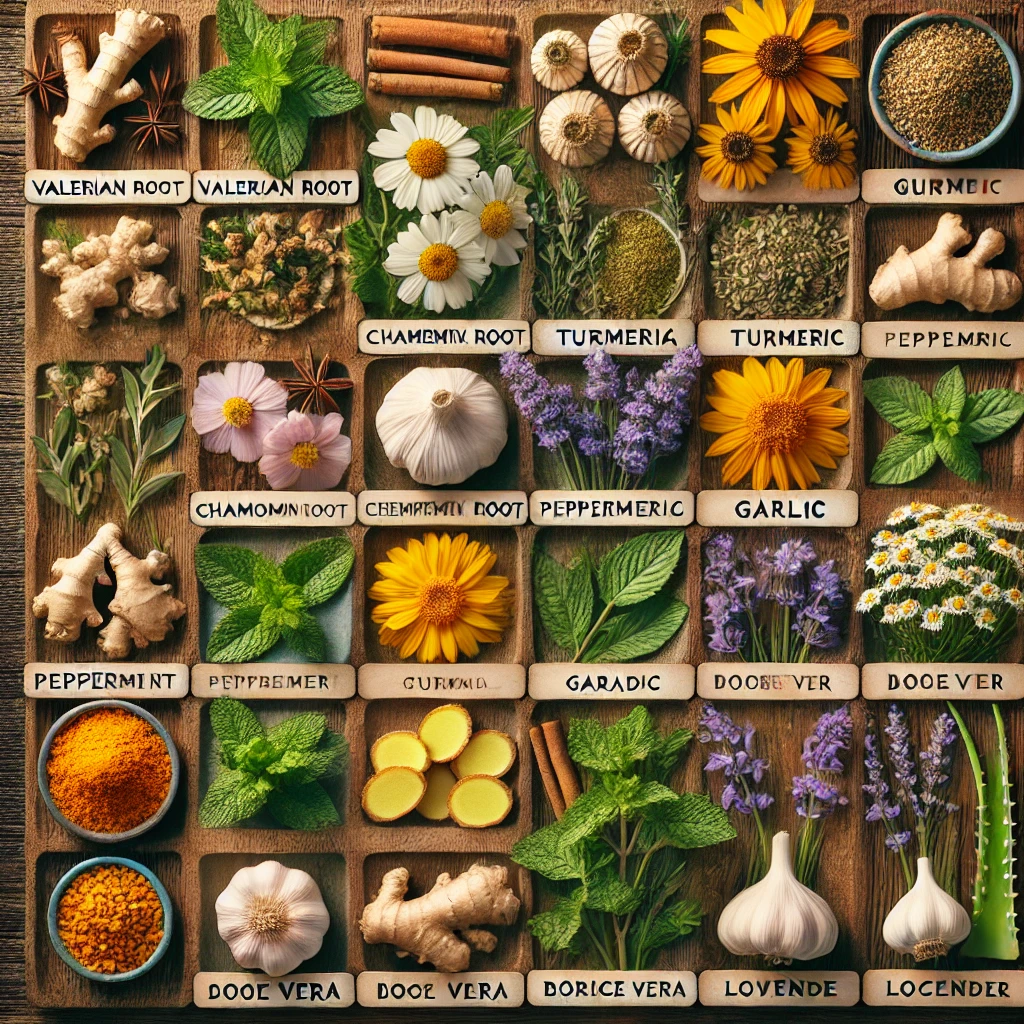
Natural Healing: Herbal Remedies Bridging Tradition and Science 🌿
Treating Diseases with Herbal Medicine: A Blend of Tradition and Science 🌿
Dr. Mina*

Treating Diseases with Herbal Medicine: A Blend of Tradition and Science 🌿
The use of herbal medicine for treating diseases and improving health has a long history. Today, with scientific advancements, extensive research has been conducted on the effectiveness of these medicinal plants. In this article, we will explore some diseases and health conditions that can be treated with herbal medicine and review the scientific findings related to them. Additionally, we will provide traditional and modern methods for preparing these herbal remedies.
1. Anxiety and Stress 😌
Traditional Method:
In traditional medicine, herbs such as Valerian (Valeriana officinalis) and Chamomile (Matricaria chamomilla) are used to reduce anxiety and improve sleep. These herbs are consumed as herbal tea or extracts.
Modern Approach:
Today, standardized extracts of these plants are available in the form of capsules or herbal tablets. Scientific studies have confirmed their positive effects on reducing anxiety and improving sleep quality.
Scientific Research:
Studies have shown that valerian root can help reduce anxiety and improve sleep by increasing GABA (a calming neurotransmitter) levels in the brain. Chamomile, due to compounds like apigenin, also has calming effects.
How to Prepare Valerian and Chamomile Tea:
• Ingredients: 1 teaspoon of valerian root, 1 teaspoon of chamomile flowers, 1 cup of boiling water.
• Instructions: Place the valerian root and chamomile flowers in a cup. Add boiling water and let it steep for 10 minutes. Strain and enjoy.
Q&A:
• Question: Do herbal remedies for anxiety have side effects?
• Answer: Yes, some herbs may cause drowsiness or interact with medications. It’s best to consult a doctor before use.
2. Digestive Issues 🤢
Traditional Method:
In traditional medicine, herbs like Peppermint (Mentha piperita) and Ginger (Zingiber officinale) are used to relieve bloating, indigestion, and nausea. These herbs are consumed as teas or decoctions.
Modern Approach:
Today, peppermint oil capsules and ginger extract are used to treat digestive issues like irritable bowel syndrome (IBS).
Scientific Research:
Studies show that peppermint oil can help reduce IBS symptoms by relaxing the muscles of the digestive tract. Ginger, due to its anti-inflammatory and anti-nausea properties, is beneficial for digestive health.
How to Prepare Peppermint and Ginger Tea:
• Ingredients: 1 teaspoon of peppermint leaves, 1 teaspoon of fresh ginger (or ginger powder), 1 cup of boiling water.
• Instructions: Place the peppermint leaves and ginger in a cup. Add boiling water and let it steep for 5-7 minutes. Strain and enjoy.
Q&A:
• Question: Is ginger safe for everyone?
• Answer: No, ginger may not be suitable for people with gallstones or bleeding disorders.
3. Inflammation and Joint Pain 🦵
Traditional Method:
In traditional medicine, herbs like Turmeric (Curcuma longa) and Frankincense (Boswellia serrata) are used to reduce inflammation and joint pain. These herbs are consumed as powders or decoctions.
Modern Approach:
Today, standardized extracts of turmeric and frankincense are available in capsules or herbal tablets for treating arthritis and joint pain.
Scientific Research:
Studies indicate that curcumin, the active compound in turmeric, has strong anti-inflammatory properties and can help reduce pain and inflammation in arthritis patients. Frankincense, due to boswellic acids, also has anti-inflammatory effects.
How to Prepare Turmeric and Frankincense Mixture:
• Ingredients: 1 teaspoon of turmeric powder, 1 teaspoon of frankincense powder, 1 cup of warm water.
• Instructions: Mix the turmeric and frankincense powders in a cup. Add warm water and stir well. Drink daily.
Q&A:
• Question: Does turmeric interact with blood thinners?
• Answer: Yes, turmeric may interact with blood-thinning medications like warfarin.
4. Cold and Flu 🤧
Traditional Method:
In traditional medicine, herbs like Echinacea (Echinacea purpurea) and Garlic (Allium sativum) are used to boost immunity and fight respiratory infections. These herbs are consumed as teas or decoctions.
Modern Approach:
Today, standardized extracts of echinacea and garlic are available in capsules or herbal syrups for preventing and treating colds and flu.
Scientific Research:
Studies have shown that echinacea can help reduce the duration and severity of colds by stimulating the immune system. Garlic, due to allicin, has antiviral and antibacterial properties.
How to Prepare Echinacea and Garlic Tea:
• Ingredients: 1 teaspoon of echinacea root, 1 crushed garlic clove, 1 cup of boiling water.
• Instructions: Place the echinacea root and crushed garlic in a cup. Add boiling water and let it steep for 10 minutes. Strain and enjoy.
Q&A:
• Question: Is echinacea safe for children?
• Answer: It is best to consult a doctor before giving echinacea to children.
5. Skin Problems 🌸
Traditional Method:
In traditional medicine, herbs like Aloe Vera (Aloe barbadensis miller) and Calendula (Calendula officinalis) are used to treat eczema, acne, and burns. These herbs are applied as gels or topical ointments.
Modern Approach:
Today, skincare products containing aloe vera and calendula extracts are used for treating skin conditions.
Scientific Research:
Studies show that aloe vera, due to its anti-inflammatory and moisturizing properties, can help heal wounds and reduce skin inflammation. Calendula has antibacterial and anti-inflammatory effects.
How to Prepare Aloe Vera Gel:
• Ingredients: 1 aloe vera leaf, 1 teaspoon of coconut oil (optional).
• Instructions: Cut the aloe vera leaf and extract the gel. Apply directly to clean skin. You can mix it with coconut oil for added benefits.
Q&A:
• Question: Is aloe vera suitable for all skin types?
• Answer: Aloe vera is generally safe, but some people may have allergic reactions.
This article provides a comprehensive guide to using herbal medicine for various health issues, combining traditional wisdom with modern scientific findings.